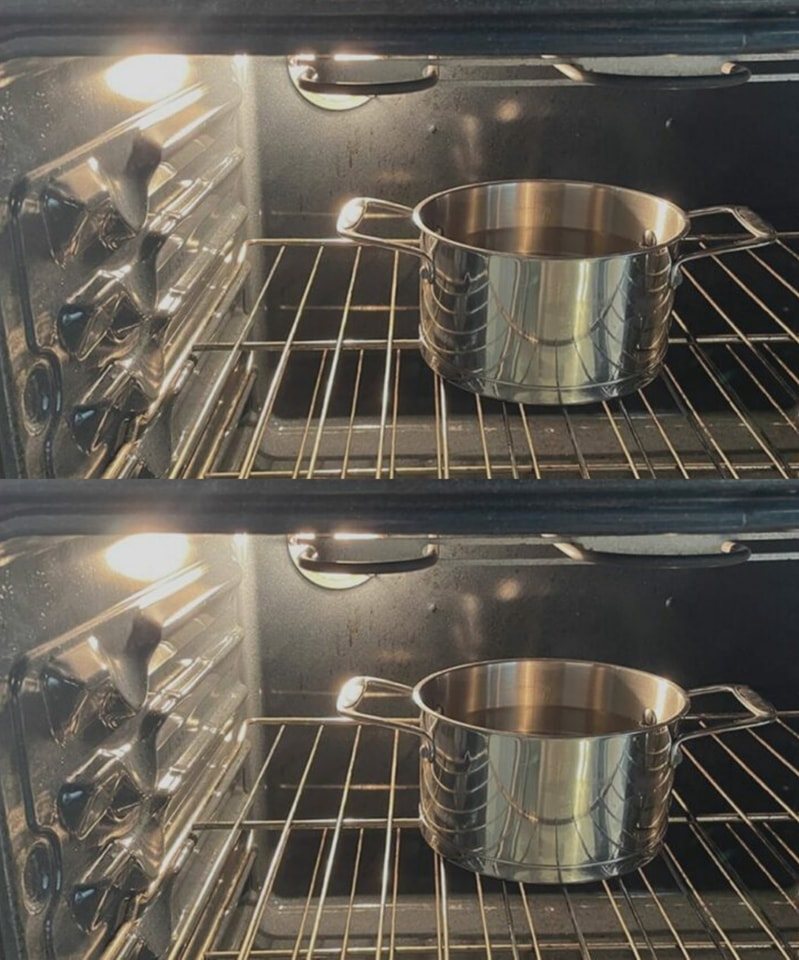ADVERTISEMENT
How to Clean and Descale Your Oven Using the Pot Method
Cleaning and descaling an oven might not be the most exciting household chore, but it’s an essential one to ensure that your oven runs efficiently and stays in top condition. If you’ve noticed grease, food buildup, or even that unpleasant burnt smell during cooking, it’s probably time for a good oven cleaning.
One of the easiest, most natural, and surprisingly effective ways to clean and descale your oven is by using the pot method. This method relies on common household ingredients and a bit of heat, which together can loosen grease, remove grime, and tackle tough limescale buildup.
Let’s break down the pot method for cleaning and descaling your oven, step by step. You’ll be surprised at how simple and effective it is!
🧼 What You’ll Need for the Pot Method:
- A large oven-safe pot or pan (preferably with a lid)
- Water
- White vinegar (or a combination of vinegar and baking soda)
- A sponge or cloth (non-abrasive to avoid damaging the oven)
- Optional: Lemon juice (for added freshness and grease-cutting power)
- Baking soda (if you prefer a mild abrasive for tough spots)
- Rubber gloves (for protection)
🔥 Step-by-Step Guide: How to Clean and Descale Your Oven with the Pot Method
Step 1: Prepare the Oven and Gather Materials
Before you begin, make sure your oven is completely cool. Remove any racks, trays, or cookware from inside. You’ll also want to check that the oven is turned off and unplugged (if applicable) for safety.
If your oven is particularly dirty, you may want to give it a quick dry wipe to remove any excess crumbs or loose debris before starting.
Step 2: Fill the Pot with Water and Vinegar
The beauty of the pot method lies in the combination of water and vinegar, which, when heated, helps to loosen grease, break down hard water deposits, and lift grime from surfaces.
- Take your oven-safe pot and fill it with about 1 to 2 cups of water.
- Add 1 cup of white vinegar (or more, depending on the size of your pot) to the water. You can also squeeze in some lemon juice for a fresh scent and extra grease-cutting power.
Step 3: Place the Pot in the Oven
Now, place the pot in the middle of the oven on the lowest rack. You want the pot to sit securely so that it can provide steam to the interior of the oven.
- Close the oven door and set the temperature to around 200°F (93°C). This temperature is enough to heat the water and vinegar mixture without it boiling over.
Allow the mixture to heat for 30 to 60 minutes. The steam from the water will start to loosen any stuck-on grease, burnt food, and even limescale deposits inside the oven. The vinegar’s acidity also helps break down hard water deposits and mineral buildup.
Step 4: Let the Steam Work Its Magic
As the pot sits in the oven and heats up, the steam will work to loosen grime, descale hard water buildup, and soften grease. It’s a bit like self-cleaning—without the harsh chemicals!
During this time, you’ll want to leave the oven door closed to trap the steam inside. If you have a lot of buildup, you can even repeat this process, adding more vinegar or water as needed.
After 30 minutes or so, you may notice the oven starting to smell fresher, and you might also see some residue on the oven walls starting to loosen.
Step 5: Wipe Down the Oven
After you’ve let the pot steam for the recommended amount of time, carefully remove the pot from the oven (it’ll be hot, so use oven mitts).
Now it’s time to give your oven a thorough wipe-down:
- Take a clean, damp sponge or cloth and wipe down the walls of the oven.
- Use gentle pressure to remove the softened grime and grease that’s loosened by the steam.
- For stubborn spots, you can make a paste of baking soda
